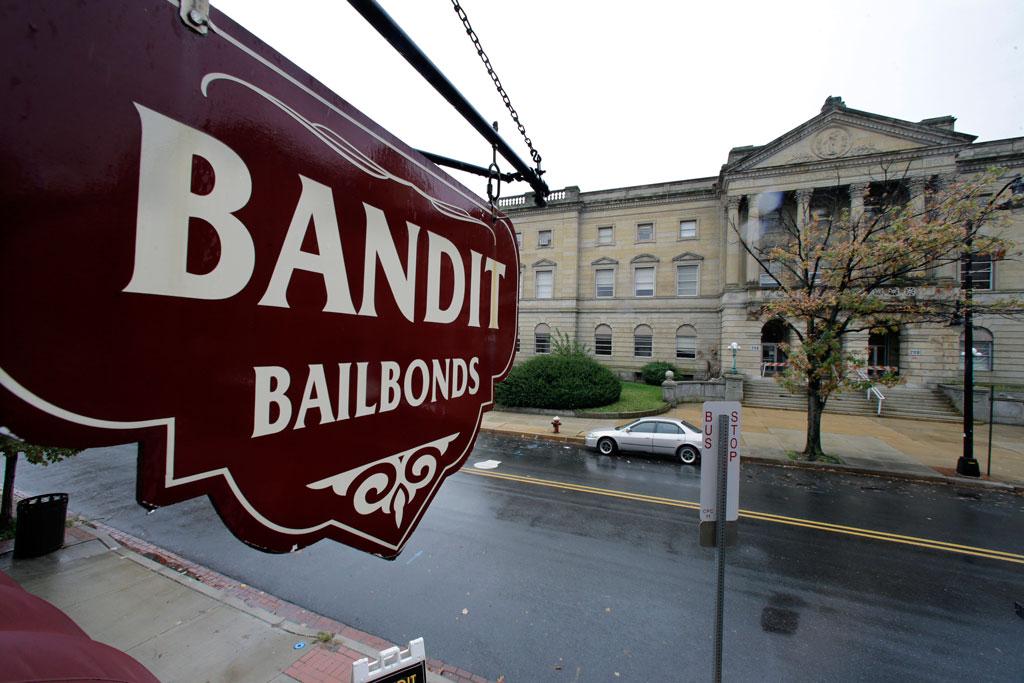LOS ANGELES—The roots of the current bail system were laid in medieval England and took an entrepreneurial twist when transplanted to American soil. Here’s a look at the evolution of bail and efforts to reform it.
How Bail Evolved From ‘an Eye for an Eye’
Violence in medieval England was settled the old-fashioned way — with more bloodshed.
To prevent further mayhem, Anglo-Saxons agreed to pay money as compensation for injuries and killings. Because the sum couldn’t always be paid at once, a third party could vouch for the person who owed money and accept liability if it wasn’t paid.
The concept was adapted when the Normans introduced a state-run criminal justice system.
“The Normans said, ‘We’re not going to fine you. We’re going to throw you in prison or mutilate you or kill you,” said Tim Schnacke, executive director of Center for Legal and Evidence-Based Practices and author of several articles on bail history. “Suddenly, the money didn’t make sense anymore.”
Friends or family members could vouch for the accused, but could be thrown in jail if the suspect fled.
It wasn’t long before that system was replaced with one in which someone could pledge cash or property to ensure their return to court instead.
Two San Francisco brothers are credited with giving the commercial bond business flight in 1898 by underwriting bonds as favors to lawyers who frequented their father’s saloon, Schnacke said.
When they learned the lawyers were charging for this service, the brothers began charging, which was a twist unique to the American system.
How Does Bail Work?
Most states use bail schedules listing dollar amounts for each crime to determine how much a defendant must post to be freed. The schedules can vary widely from place to place by tens of thousands of dollars in some cases.
Once bail is set, the defendant can get someone — a family member or friend — to post the money with the court or they can pay a bail bondsman to post a bond with the court.
Alternatives include: releasing defendants on their own recognizance with a promise to appear or issuing an unsecured bond in which a defendant promises to pay a certain amount if they violate conditions of bail.
In some states, other conditions for bail can be set. Defendants may have to wear GPS anklets to track their whereabouts, check in regularly with the probation or pretrial department, submit to drug testing or attend drug or alcohol counseling.
Century-Old Efforts for Bail Reform
Efforts to reform bail date to the 1920s when some people began to question whether the bail system kept too many people locked up awaiting trial, Schnacke said. But change didn’t come until the mid-1960s when Attorney General Robert F. Kennedy drew attention to the large number of jail inmates who could not afford commercial bail.
The first wave of reform allowed judges for the first time to free defendants on their own recognizance. Most states later adopted similar measures. At that point, bail was only focused on assuring someone’s return to court.
However, as some people free on bail continued to commit crimes, Congress passed theBail Reform Act of 1984, giving federal judges the right to reject bail for some defendants because they posed a threat to public safety. Most states later extended that power to judges setting bail.
The Latest Wave of Reform
Today’s bail reform combines elements of the previous two phases in a broader effort to release lower-risk defendants — many of whom can’t afford cash bail — and keep dangerous suspects locked up pending trial.
In order to do so, some counties and states use research-backed tools that look at several elements in criminal records to predict whether someone will return to court and how much a danger they would present to the public if released.
In Colorado, a defendant is scored on 12 factors. Three items carry nearly half the points available: age at first arrest; other charges pending; past prison sentence. Other factors include whether someone pays mortgage or rent, has pending warrants, is currently under supervision or has a history of revoked bonds.
From The Associated Press




